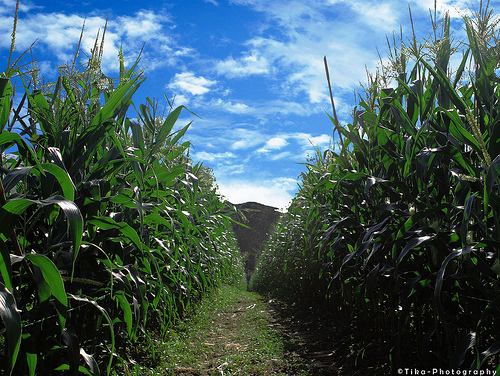The most common GMO foods, and how they're modified

There is a big push in the United States to start labeling products that contain GMO foods. This labeling is already common in the rest of the world, but the US is lagging in this respect.
The problem with GMO foods is that some of them are modified "good" (to be healthier for the consumer, or to produce more food per acre) and some of them are modified "bad" (to be resistant to Roundup or contain other harmful chemicals). And there is no way to sort out the good GMOs from the bad ones.
In the United States, about 85% of the corn we grow has been genetically modified. GMO corn is mainly modified to be Roundup-resistant, which means that your corn flakes have been soaked in glycophosphate.
Glycophosphate is one of the world's most effective weed killers, but it is also incredibly toxic to the environment. Not only is it bad for you to eat, the widespread practice of using Roundup is kind of destroying the planet.
Soy, canola, alfalfa, and sugar beets are four other crops which are heavily modified in the US, primarily for Roundup resistance.
But then we have the case of crookneck squash and zucchini, which have had a protein added to them that makes them resistant to a disease. It's a perfectly ordinary protein, harmless to humans. And this added protein means that these crops can be grown with fewer pesticides.
It's hard to argue that these GMO squashes belong in the same category as the GMO corn, soy, and other crops that have been genetically engineered to be resistant to (and thus encourage the use of) the toxic weed killer Roundup.
Unfortunately we are in a situation of having to throw the baby out with the bathwater. Which is too bad, because GMO crops hold a lot of promise, when they are done right.
Image courtesy Flickr/tikarasa

1 comments